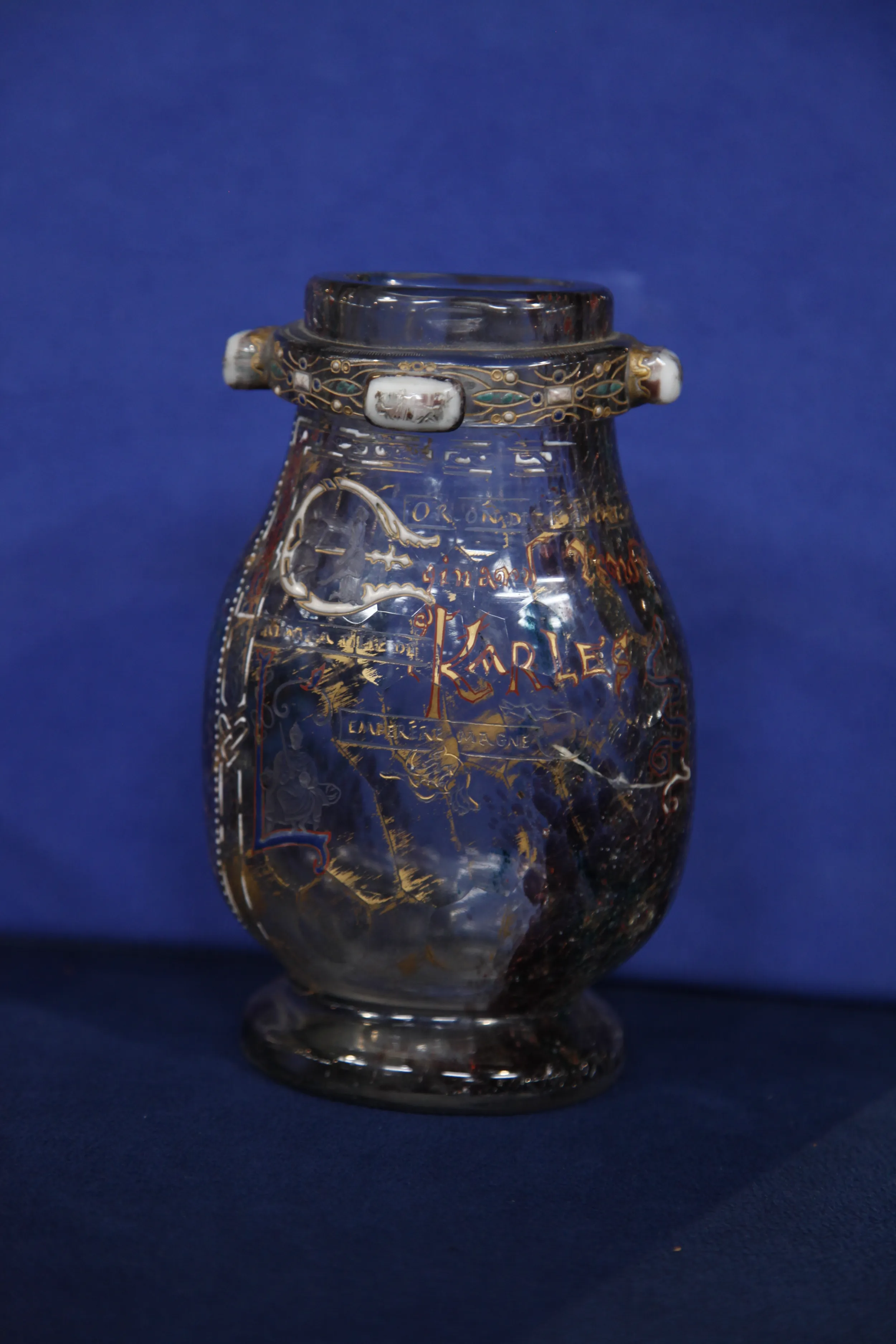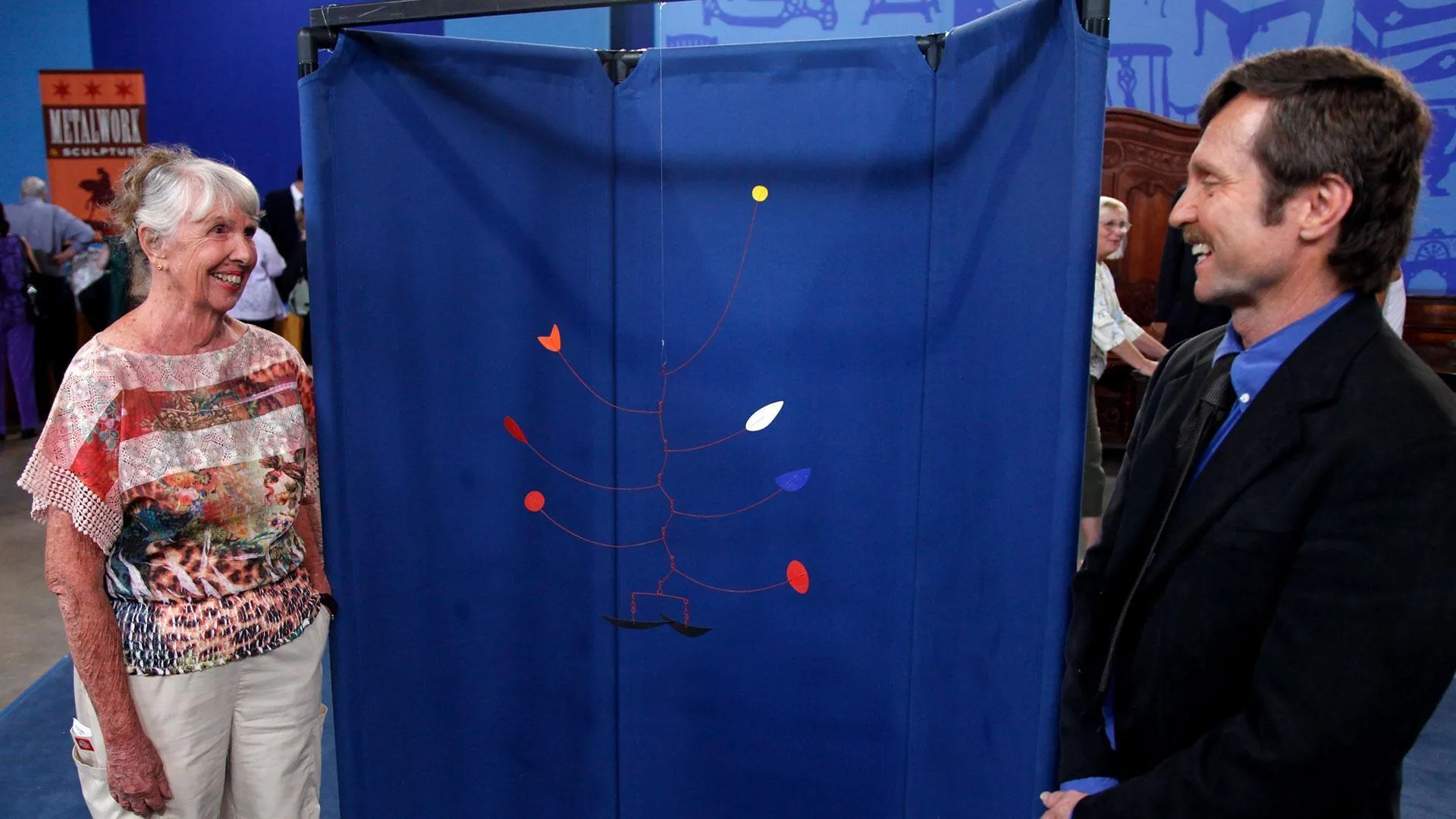GUEST: I know they're …Emile Gallé. And, in about 1975, my mother's stepfather died. And so I was allowed to go into the house and get some pieces, and this is two of the things I did retrieve from the house.
APPRAISER: And did you do some research on the name Gallé.?
GUEST: I have. I know he died in 1904. I could not find a catalog of the numbered pieces, because these do have numbers on them, but I don't know what it meant. …
APPRAISER: Emile Gallé was to French glass what Louis Comfort Tiffany was to American. He was probably the best-known of the French Art Nouveau artists. Now, these are not traditional Gallé pieces. He's known for his cameo, his overlay pieces, where it's one color over another and then they carved it away. These pieces are both early. I would date them roughly 1885 to 1890.
GUEST: Oh, wow.
APPRAISER: So we'll start with this one first. The form is called a y˙, which is an ancient Chinese bronze shape. And you have Chinese figures that are engraved. On the bottom you have the engraved "E. Gallé Nancy," which is typical on these early pieces. Now, what Gallé did before he overlaid his glass is he would mix mottled color glass in and oxides in, so you can see the veining throughout the glass. The back of the piece is what they call martelé. Now, martelé in French means "hammered." Now, for metal, you can hammer it. For glass, you have to put it on a wheel and make the cuts. As you go around, you'll see lots of borders. The four pieces on the top are actually applied clumps of glass that are then carved and then painted on the body. So it's called appliqué. On both these pieces, besides the mottling in the background, you have both gilding and enamel colors, which are painted on, then fired onto the surface at higher temperatures. The second piece is interesting because you have a beautiful dragonfly on the front. You have an engraved "E.G.," which is gilded. Then, as you go around it, you have an Egyptian motif. Now, in the early 1900s, you had a Neoclassic revival. So it's Greek, Roman, Egyptian things. So you have the figures, you have the cattle. And same thing, you have the beautiful, mossy color in the glass. On the big piece, on the y˙ shape, I would put a retail value on this piece of about $15,000.
GUEST: Oh, my gosh, wow.
APPRAISER: The little piece with the dragonfly, this piece I would put a value of $25,000 on.
GUEST: What?! Oh, my God, you're kidding?
APPRAISER: No.
GUEST: $25,000?
APPRAISER: $25,000. Oh, my God.
APPRAISER: Now, if you get the book …Emile Gallé by Philippe Garner, the mate to this is sitting on the cover of the book.
GUEST: Really?
APPRAISER: Yep. It's a marvelous piece. Even though it's smaller, it's the more important of the two.
GUEST: Are you kidding? I can't believe that. I am stunned. (laughs)











